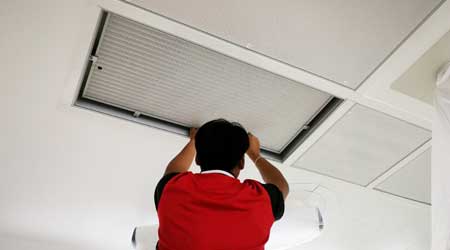
How to Avoid ‘Hygiene Theater’ in Facilities
September 17, 2020
One of the biggest challenges in creating safe spaces for facility occupants during this pandemic is using increasingly scant resources efficiently. That means being absolutely sure that measures proven to have a positive impact on health and safety are enacted, as opposed to measures that simply look good.
We know that many FMs have been overwhelmed by how difficult (and expensive) some of the new necessary coronavirus-prevention measures are. Strategies like more frequent cleanings, new policies and procedures for everything from elevators to restroom use, and reshaping office configurations to allow for social distancing all are time-consuming, tricky, and expensive. But, ultimately, they’re necessary if organizations do want to create a space that is safe and healthy for occupants.
What’s not necessary, however, is “hygiene theater.” What is hygiene theater? It basically means doing something only because it looks good, rather than because it has an impact on health and safety. According to a recent story in The Atlantic, which coined the term, “Hygiene theater can take limited resources away from more important goals.” The piece argues that money and time spent – in one notable case, the tens of millions of dollars being spent to shut down and clean the New York City subway system each night - cleaning surfaces is basically wasted because the chances of infection from a surface are so low. A better tack, the article argues, would be to spend that money on distributing masks and PSAs about the importance of social distancing.
So how do FMs discern the difference between hygiene theater and what’s actually effective? A good place to start is always the CDC guidelines, which are rooted in science. Some FMs have complained that the CDC guidelines change too frequently to be useful, but that’s because the science is constantly changing as we learn more and more about this novel coronavirus. Many organizations would also rather err on the side of caution, and of course, that’s commendable. But again, FMs should be following the science and the guidelines to be sure how they’re spending money is the most impactful.
This post was submitted by Greg Zimmerman, editor, Building Operating Management and FacilitiesNet.com.
Next
Read next on FacilitiesNet












